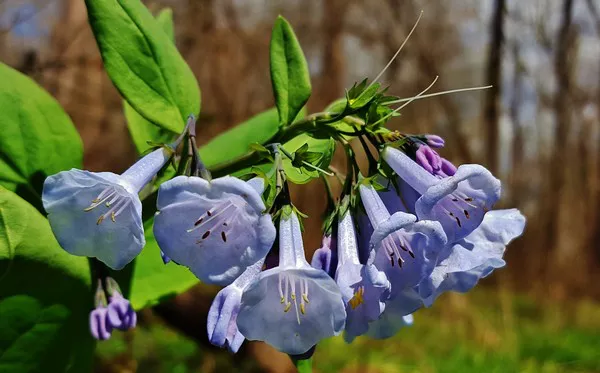Flowers, with their delicate petals and vibrant colors, have long been revered for their aesthetic appeal. However, beyond their visual charm, flowers carry profound symbolic meanings that have transcended cultures and generations. In this exploration, we delve into the rich tapestry of symbolism associated with flowers, unraveling the intricate messages they convey.
The Historical Tapestry of Floral Symbolism
Throughout history, flowers have held a significant place in various societies, often serving as potent symbols that communicate emotions, sentiments, and cultural nuances. Across different civilizations, the symbolism of flowers has evolved, reflecting the values and beliefs of diverse communities. The ancient Egyptians, for instance, utilized flowers in religious rituals, attributing symbolic meanings to specific blooms. The lotus flower, for instance, symbolized rebirth and spiritual enlightenment.
In the medieval era, the Language of Flowers, also known as floriography, gained prominence. This elaborate system assigned specific meanings to different flowers, allowing individuals to communicate sentiments through carefully chosen bouquets. The language of flowers became a popular means of expressing love, friendship, and condolences, adding a nuanced layer to interpersonal communication.
Cultural Variations in Floral Symbolism
The symbolic significance of flowers varies across cultures, showcasing the diverse ways in which different societies perceive and interpret these natural wonders. In Eastern cultures, cherry blossoms hold immense significance, representing the transient nature of life and the beauty found in impermanence. Conversely, in Western cultures, red roses are synonymous with love and passion, making them a staple in romantic gestures.
In Hinduism, the lotus flower is a sacred symbol, embodying purity and divine beauty. The intricate mandalas created with flower petals during religious ceremonies further emphasize the spiritual importance of flowers in Hindu culture. In contrast, the chrysanthemum is highly esteemed in Japanese culture, symbolizing longevity and happiness. Such cultural variations highlight the versatility of flowers as carriers of symbolic meaning.
Emotional Expression Through Floral Language
Flowers have a unique ability to convey complex emotions and sentiments, making them a universal language of expression. Whether it’s a bouquet of vibrant daisies to express joy and innocence or the somber elegance of lilies to convey sympathy, the language of flowers provides a subtle yet powerful means of communication. Understanding the emotional nuances associated with different blooms allows individuals to curate floral arrangements that speak volumes without uttering a single word.
The language of flowers also plays a pivotal role in significant life events, from weddings to funerals. Brides carefully select wedding bouquets to symbolize love, fidelity, and good fortune. In funerals, mourners may choose specific flowers to convey sympathy, remembrance, or hope for the departed soul’s eternal peace. The thoughtful selection of flowers becomes a poignant expression of the emotions tied to these life-altering moments.
See Also: What is the prettiest flower in the world?
Floral Symbolism in Art and Literature
Beyond the tangible realm, flowers have inspired countless artists and writers, becoming central motifs in the world of art and literature. Renowned painters like Vincent van Gogh and Claude Monet immortalized flowers on canvas, capturing their essence and symbolic significance. In literature, poets and authors often use flowers as metaphors to convey a spectrum of emotions and themes.
William Wordsworth’s famous poem, “I Wandered Lonely as a Cloud,” beautifully illustrates the profound impact of a field of daffodils, while Emily Dickinson’s verses often draw on the symbolism of flowers to explore the complexities of human emotions. Flowers, through their symbolic richness, serve as muses that inspire creativity and introspection in the realms of artistic expression.
Environmental and Spiritual Symbolism of Flowers
The symbolism of flowers extends beyond the realms of aesthetics and emotion, encompassing ecological and spiritual dimensions. In the natural world, flowers play a crucial role in the reproduction of plants, symbolizing fertility and the continuity of life. The intricate process of pollination, facilitated by the allure of flowers, underscores their significance in sustaining ecosystems.
Moreover, various religious and spiritual traditions incorporate flowers into rituals and ceremonies, imbuing them with sacred symbolism. In Buddhism, the lotus flower is revered as a symbol of purity and enlightenment, emerging pristine from the muddy waters. Similarly, Native American cultures attribute spiritual significance to the use of flowers in rituals, symbolizing the interconnectedness of all living beings.
Contemporary Perspectives on Floral Symbolism
In the contemporary context, the symbolism of flowers continues to evolve, reflecting changing societal values and perspectives. The rise of floral arrangements in events such as gender reveal parties, where pink and blue flowers signify the gender of an unborn child, exemplifies the adaptability of floral symbolism to modern customs.
Additionally, flowers have become symbols of environmental awareness and conservation. Efforts to protect endangered species of flowers highlight the urgency of preserving biodiversity and the delicate balance of ecosystems. The symbolic power of flowers is harnessed to advocate for environmental sustainability and a harmonious coexistence with the natural world.
Conclusion
In the intricate language of flowers, we discover a profound and universal means of communication that transcends cultural, historical, and geographical boundaries. From the sacred lotus in ancient Egypt to the modern gender reveal bouquet, flowers continue to be versatile carriers of symbolism, embodying emotions, cultural values, and ecological significance.
As we navigate the rich tapestry of floral symbolism, it becomes evident that the beauty of flowers extends far beyond their visual allure. They are ambassadors of emotions, messengers of culture, and silent narrators of the interconnectedness between humans and the natural world. In each petal and bloom, the story of flowers unfolds, inviting us to appreciate the intricate language they speak and the myriad meanings they convey.


